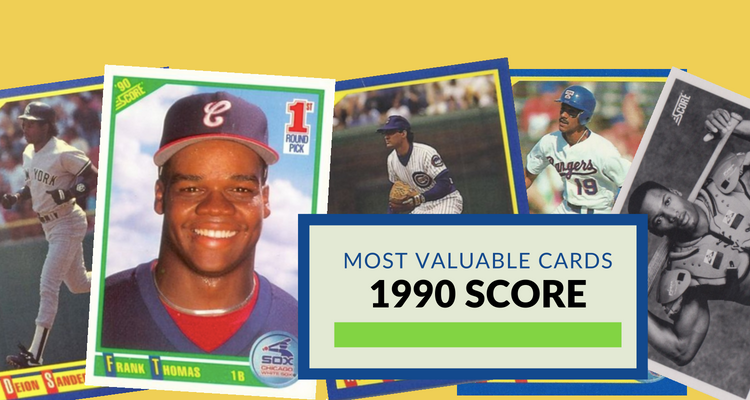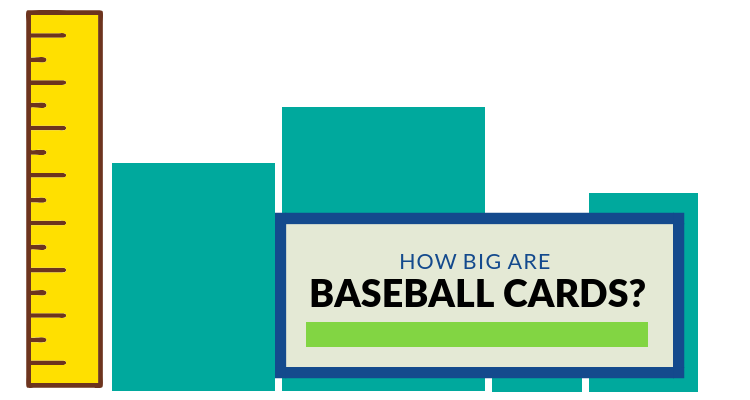 Ryan Barone (@ballcardgenius, Card Expert) is a lifelong member of the hobby. He has been quoted in PSA Magazine, and his content has regularly been mentioned in “Quick Rips” (the Topps RIPPED Newsletter) and across other hobby publications. hello@ballcardgenius.com; Last Time Ago LLC dba Ballcard Genius.
Ryan Barone (@ballcardgenius, Card Expert) is a lifelong member of the hobby. He has been quoted in PSA Magazine, and his content has regularly been mentioned in “Quick Rips” (the Topps RIPPED Newsletter) and across other hobby publications. hello@ballcardgenius.com; Last Time Ago LLC dba Ballcard Genius.
Affiliate Disclosure: This post contains affiliate links. As I am a part of the eBay Partner Network and other programs, if you follow these links and make a purchase, I’ll receive commission. As an Amazon Associate, I earn from qualifying purchases.
Baseball cards have had quite a run, right? When you combine the history, the ups and downs, and the pure vastness of all things related, it really is one of the greatest hobbies imaginable.
That said, there have been some really terrible years—1988 was a cardboard wasteland, and not sure 1992 had a ton to offer either. On the other hand, there have been a lot of really great and collectible years as well. I mean, you can basically lump all of vintage in the “good” category given each year has Hall of Fame rookie cards to chase, iconic designs, and much more.
The 1952 Topps Mickey Mantle and Willie Mays are staples of baseball card history.
— PSAcard (@PSAcard) February 17, 2023
It’s always incredible to see copies this clean come in for authentication & grading 70+ years after the set’s release. pic.twitter.com/2hRSeNg4eH
Given all of that, which have been the best years for baseball cards? Here are some thoughts.
And before jumping in, because (as mentioned) all of vintage is pretty much great, I’m focusing on sets newer than 1980. This is also because most of you reading this are probably trying to figure out what to collect, and let’s face it…while 1952 was a great year in baseball cards, it’s not a set that most of us can chase.
1983 (and 1984)
What makes this whole exercise tough is that you’re going to have key rookies from most of the 1980s, including, say, the biggest with Rickey Henderson in 1980. That said, Rickey only has a rookie card in Topps, while other players like Cal Ripken Jr or Tony Gwynn are going to have rookie cards in Topps, Donruss, and Fleer.

So, is 1980 really one of the best years in baseball cards? Or just a good year for Topps?
The other difficult thing is that for all the reasons you can say 1983 was a great year, 1984 isn’t too far behind. It’s for that reason I’m choosing to lump the two together, giving you two options to consider based on your personal preferences.
So, first up, the Topps portrait plus action photo. First, in 1983, we had the circular headshot, and then in 1984 the square. Both are great, and broke up what – up until then – was the standard card with action photo and design.

Next, as mentioned, the rookies. 1983 Topps featured Tony Gwynn, Wade Boggs, and Ryne Sandberg, but so did other brands Donruss and Fleer. 1984 boasted Don Mattingly and Daryll Strawberry, along with Fleer that also had them both, and Donruss that had them both, and Joe Carter. Not to mention that the 1984 Donruss Don Mattingly holds much higher value than Topps.

So, given that both years’ Topps sets were well received and featured key rookies, along with the fact that the other sets in Donruss and Fleer do the same, it’s hard to argue against 1983…and 1984 not being on this list.
1993: More Gold, Hello Refractors, The Captain, and More
The early 90s were not kind to baseball cards, so 1993 offers some fresh air from a few different angles.
One, it was the second-year transition of Topps in the sense that up to 1991, baseball cards were pure cardboard without any room for special etchings, finishes, etc. In 1992 cards had a bit more gloss, and we were introduced to the first true parallel with 1992 Topps Gold.

So, in 1993, we got more of that, and more Topps Gold. But to take things further, we also got Topps Black Gold!

1993 Topps was also the true rookie card year for Derek Jeter, in which even the base version turns heads, and then of course the gold version that catches even more eyeballs.

But for as great as these Jeter cards were from Topps, they weren’t even the best Jeter RCs out there. That crown goes to 1993 SP, with a foil set of rookies including Jeter, along with cards of Chipper Jones and Johnny Damon.

The 1993 SP set on its own was revolutionary, and a great set in the opinion of many hobby enthusiasts given its premium approach.
Last, and certainly not least…you can’t talk shiny gold and foil baseball cards without addressing the king of shine, the refractor card, and 1993 being the first year of the Topps refractor!

2001: Topps Chrome, Pujols RC, Ichiro RC
2001 was not the first year of Topps Chrome, but it was the first year that huge notable “sure thing” Hall of Famers were featured on a Chrome card. Now, it’s not without some twists and turns.

Here is an excerpt from Baseballcardpedia.com that does a nice job explaining the situation:
Card #596 of Albert Pujols is the only card in the Chrome series that was NOT included in the regular 2001 Topps base set. Due to licensing restrictions, Ichiro Suzuki — who was included to 2001 Topps Series Two — could not be included in the Chrome edition. Therefore, Topps replaced Ichiro with Pujols. Ichiro’s Chrome RC was added to 2001 Topps Chrome Traded.
Baseballcardpedia.com
Also in 2001, Barry Bonds connected with the sweet spot 73 times for home runs and broke the current record of 70 at the time. While this didn’t have a direct impact on 2021 releases, I’m sure it fueled popularity in Bonds’ cards and potentially cards of others.
Speaking of sweet spots, 2001 was the inaugural year of the Upper Deck Sweet Spot release, once again innovating and bringing something that hadn’t been done before with Sweet Spot Signautres. These were autographed cards but instead of the signature being on the card or a sticker, was directly on a stitched piece of leather mad to look like the sweet spot of a baseball.

2001 also welcomed Donruss back into the baseball card game, after not producing since 1998, which is when then parent company Pinnable went bankrupt.
Last, if you’re a fan of the Topps Heritage line of baseball cards that are still hitting shelves today, 2001 is to thank for introducing Bowman Heritage. That’s right, “Heritage” goes all the way back to 2001, with the release becoming part of the annual Topps product line in 2007.
1989: Griffey Jr. Rookies, Upper Deck, Billy Ripken
The rookie card year of Ken Griffey Jr. is enough to put a stamp of “great” on an entire annual catalog of cards like 1989, but there is more. First though, sticking with Griffey, we saw rookie cards from all major sets.
Aside from 1989 Upper Deck, which we will get to in a second, the 1989 Upper Deck Rated Rookie is perhaps one of the most memorable, and still (given the amount of cards produced) is affordable and a cornerstone of any collection.

The 1989 Donruss rookie was part of the main set checklist, as was the 1989 Fleer rookie, which is always nice for anyone opening packs and building sets. That said, while there is a Topps rookie, it wasn’t available in packs, and could only be obtained as part of 1989 Topps Traded purchases. The same for Score, where Griffey Jr. could only be found in the Rookies & Traded set. (Griffey Jr. was also in the separate 1989 Donurss set, “The Rookies.”)
Getting back to 1989 Upper Deck, we’ve talked about it a lot before, but it was a release that set out to change the current state of baseball cards thanks to its card design and quality, and more. Featuring a number of cool cards (and notable errors), the most sought after of course was card #1, Ken Griffey Jr.
Read More: Upper Deck High Series vs. Low Series

Last, we need to talk about 1989 Fleer again, but for different reasons. Billy Ripken. Mention the name to any card collector and they’ll probably giggle over the chaos created by Billy Ripken’s 1989 Fleer card, which famously featured a four-letter expletive on the bottom of his pictured bat knob. There were a number of different “corrected” versions that was released after the fact, but the damage had been done, and the card is very much still in circulation today.



